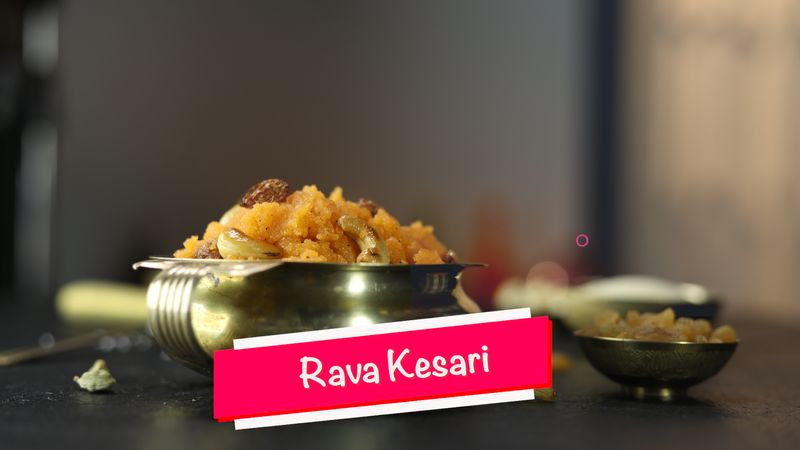Rava Kesari is a South Indian sweet made from semolina (rava or sooji) and ghee. It is flavoured with saffron, cardamom and nuts and has a soft, creamy texture. Rava Kesari is usually prepared during festivals and poojas specially in Southern states on India. Its also made and offered as prasadam in many temples. This melt-in-the-mouth dish can be prepared in less than 15 minutes. There are a few variations like dry fruits, pineapple kesari, fruit kesari which are most popular.
About Rava Kesari
It is a sweet dish that became very popular in Tamil Nadu during the time of the Maratha Empire in the 18th century, but this dessert seems to be even older.
It is known as Rava Kesaru in south Indian cities like Tamil Nadu, Andhra Pradesh, Kerela and Karnataka. It is commonly known as Sheera in Marathi and Gujarati, Rava Kesari in Malayalam, Telegu, and southern part of India and suji halwa in north India. In some parts of North India, this sweet is also known as Jonnadula halwa.
Overall, the taste of rava kesari is a delicate and complex blend of sweet and aromatic flavours, with the semolina providing a slightly grainy texture.
The word ‘kesari’ means an orange or saffron (Kesari is Saffron in Hindi), so it’s a recipe of orange color pudding made of semolina and flavoured with Saffron.
As its orange in colour, you can use synthetic orange food color however we would recommend natural color and saffron to get that orange and yellow hue.
Difference between Halwa & Kesari
The difference between rava kesari and sooji halwa is the color. Rava kesari has an orange color – hence the term kesari which means orangish. Generally synthetic orange food color is added while making rava kesari, another variation of rava kesari is pineapple kesari recipe which is made with chopped pineapples.
Another difference is the amount of sugar and ghee that’s comparatively higher in Kesari in south India.
Pro Tips
1. Use fine quality rava (semolina) for making kesari.
2. Roast the rava in ghee or oil till it turns golden brown.
3. Boil the water or milk and add sugar and saffron before adding the roasted rava.
4. Keep stirring the mixture continuously to avoid lumps and to cook the rava evenly.
5. Cook the kesari on low flame till it thickens and starts to leave the sides of the pan.
6. Add chopped nuts like cashews and raisins for added flavor and texture.
7. Add food color if desired for an attractive color.
8. Serve the kesari hot or warm.
9. Optionally garnish with chopped nuts and ghee before serving.
10. Be careful while adding sugar, as the desired sweetness may vary, start with less and add more as needed.














